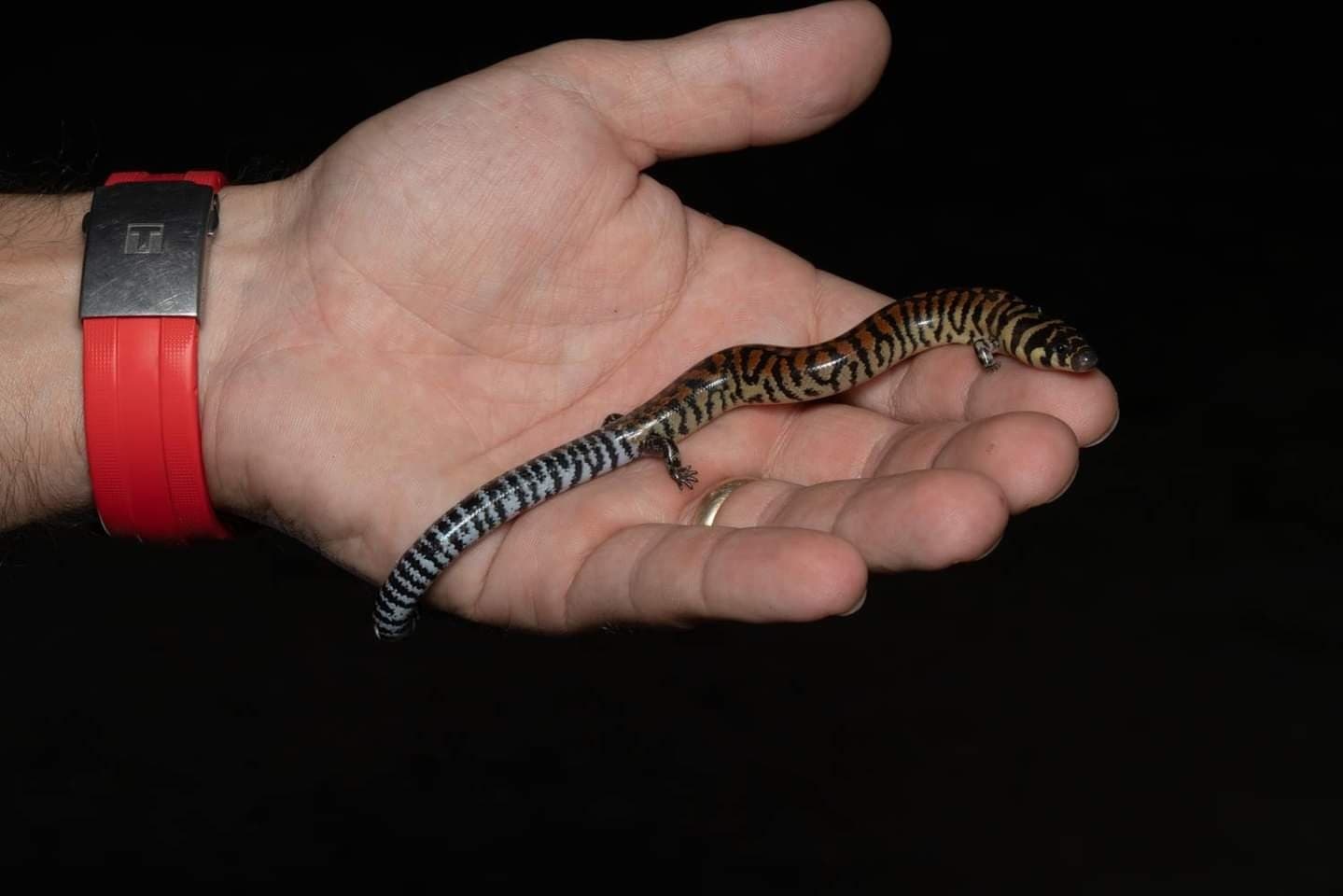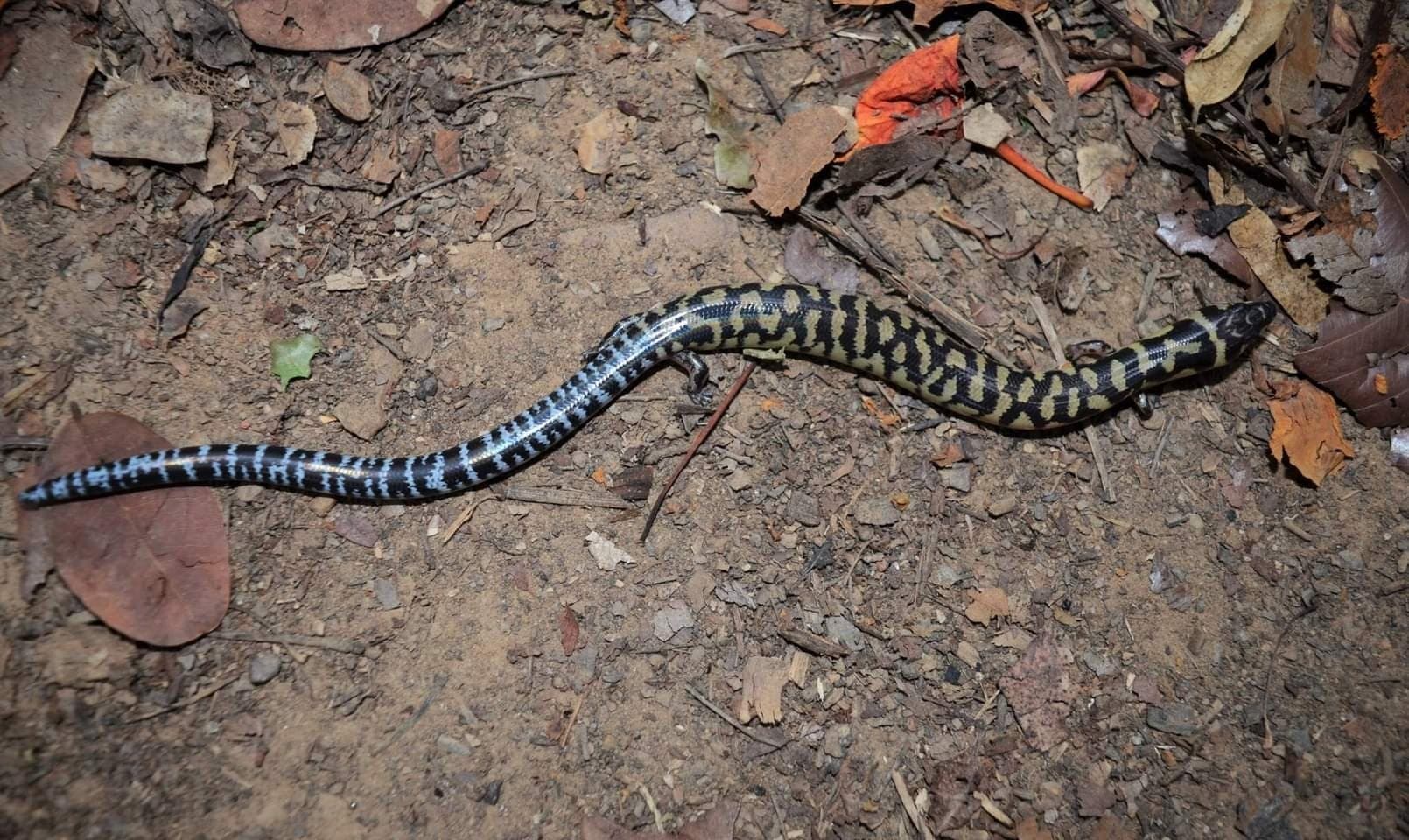Banded supple skink goes by the name of land snake (ម្ករប៉ារ៉ា/ពស់ដី) in Cambodia, and it looks absolutely interesting. This lizard species is one of a kind, and not a lot of people know about them. So I am here today to tell you a little of something about the banded supple skink. Let’s find out with me below and feel free to add more because there is not much information about them available.
Appearance

Probably looks big in photos, a banded supple skink is a small lizard. But it is a long skink that grows up to 12 centimeters or longer. It has a glossy orange upperpart and pale yellow underpart with black markings from head to tail. The thing about the banded supple skinks is that they resemble a snake more than a lizard. Its long tail which is a similar size to its body makes it look like a small snake. A banded supple skink has a long slender body with 4 little legs that allow it to climb. Its movement is slow, and it rarely bites so there is no evidence that shows the danger of its bite yet.
Feeding & Habitats

Endemic to Southeast Asia, banded supple skinks are found in Cambodia, Laos, Myanmar, and Thailand. They inhabit cultivated areas and tropical deciduous forests with sufficient food sources. Their favorite food is insects, especially beetles, carpenter bees, crickets, termites, and many other bugs. A banded supple skink builds its nest or burrows in the ground. Unfortunately, this species is also threatened by habitat loss due to the destruction of forests. The good thing is that they survive in agricultural areas so at least it is not a big concern now.
Threats
Apart from habitat loss, human activities also play a part in threatening their lives. Because a banded supple skink looks like a snake at a glance, people either chase it away or kill it. Many people admitted to killing them when coming across one because of fear. If the awareness of protecting them is not widely spread, they will soon extinct one day.
Related Post: Long-Tailed Grass Lizard Facts
